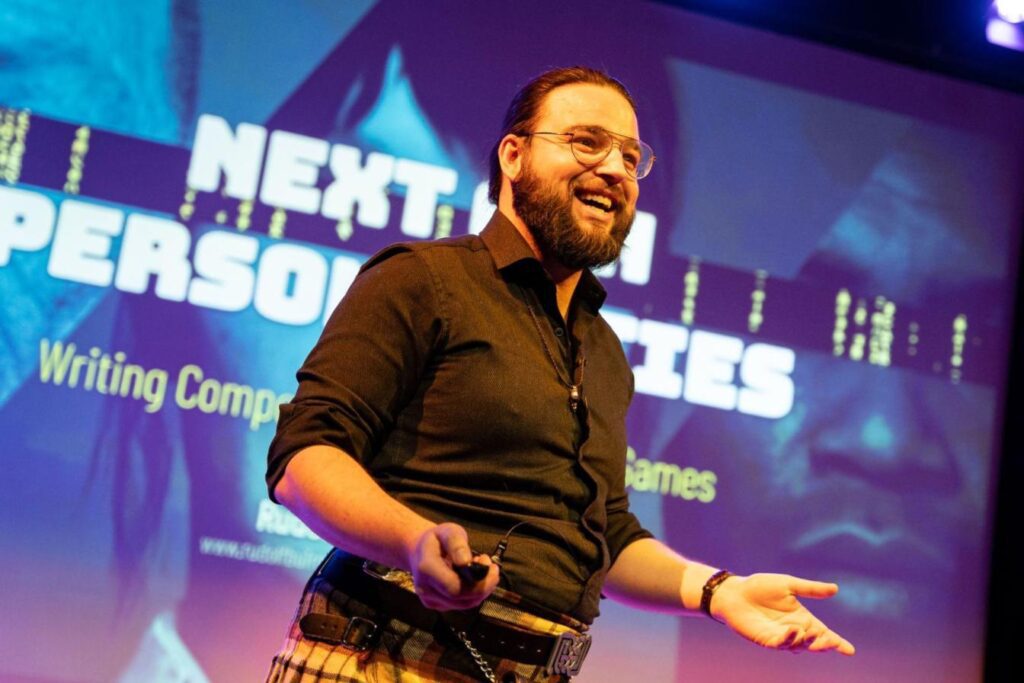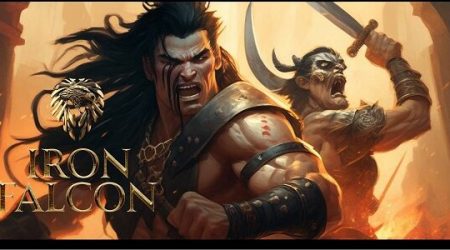5 Tips On Writing: With Rudolf Buirma
My name is Rudolf, and I am a game writer and narrative designer from the Netherlands. Currently, I hold the position of Narrative Producer at Wolfpack Games Studio.
My journey to this career has been diverse and rich. In the past, I’ve been active in theater as a playwright and performer,taken on various roles as a game designer, and later earned myself a Master’s Degree in Screenwriting at the Screen Academy Scotland. This background has uniquely shaped my specialization as a “Game Writer and Narrative Designer.”
In my free time, I indulge in roleplaying, worldbuilding, illustrating, comic writing, game making, hiking, and storytelling. These hobbies have fueled my passion for creating immersive, interactive adventure stories
Hooking Your Audience
Depends on the medium! Simple as that.
As a storyteller, if you want to hook an audience by design, you intimately need to know what story you are creating, who your intended audience is, and what they are expecting from your story.Then, twist that expectation at the start. Create comfortable, expected scenarios, keep vital information from your audience, and introduce seemingly impossible challenges unique to your setting and character. This subversion makes your audience constantly ask, “What’s going to happen next?”
For character-driven stories, make the scenes gripping. All stories are about characters, but the best ones make us care deeply about their journeys and challenges. Hook your audience early with an exciting, unexpected twist where an easily relatable protagonist faces a seemingly insurmountable problem.
For example, your sympathetic, stressed-out, down on their luck, single protagonist is feeling that the clock is ticking and is now desperately longing for love. They have spontaneously gone to a speed dating event where they suddenly meet two of the most wonderful people they could ever imagine! However, these are two bitter rivals and utterly despise each other. At the end of the event, both of these two wonderful people ask the protagonist out on a date, who is your protagonist going to choose? How are they going to deal with rejecting someone? How are they going to manage accepting both dates? How are they going to deal with the hectic stress of it all?! —
In short: “What is going to happen next?”
Mastering Plot Development
Start small and work up from there. Always ask, “What is the worst thing that could happen in this scene?” Write that scenario and figure out how to solve it.
Use a five-act structure, which expands on the traditional three-act structure by adding critical spaces between the opening, midpoint, and finale acts. These in-between acts are crucial for plot development.
First, identify your story’s core elements and condense them into a two-sentence logline. Know what your protagonist or storyworld wants or needs, what prevents them from achieving it, and the stakes involved. This creates urgency and tension.
Plot your story in three main acts:
- Introduction: Who is your protagonist? What do they want, and why can’t they get it?
- Subversion: Your protagonist thinks they’ve won, but the antagonist still succeeds.
- Rescue: Against all odds, your protagonist fights to rescue themselves and their cause.
From here, you can further break down each scene into its own mini three-act structure. Always aim to have a clear starting point, middle point, and endpoint, then explore the most interesting obstacles to that goal.
Pacing is key. The longer it takes for the audience to move from one key point to the next, the more you stretch their attention span. This pacing-space defines your plot development.
Additionally, as you write, always stick to your logline, or actively adjust it, in case you discover that your story is about something else through the exploration of your own writing process.
Effective World-Building Strategies
Determine what your world-building needs to accomplish, then invest the appropriate amount of time.
There are two main types of world-building: Practical and Imaginative. Your project will likely fall somewhere between these extremes. Practical world-building creates a believable setting that serves your story. Imaginative world-building develops a detailed world first, then explores it through the story.
However be warned! The process of pure Imaginative World-building rarely leads to the development of any actual character stories! World-building can be a fulltime activity that constantly keeps changing, evolving and adapting to no end if you don’t actually also have a story that you want to tell in it! Ask yourself, “What is my world-building supposed to do?” and aim to achieve that goal.
Techniques for Character Development
Characters are people with both good and bad qualities. Their strengths and weaknesses depend on their environment, conditions, and interactions with others.
As an exercise:
For your main characters, identify their key strengths and weaknesses, then write a short bio explaining why and when these traits developed. Your story will be strongest when these traits are challenged in unexpected ways.
This creates moments of growth, defining character development. Remember, a character’s refusal to grow is also a form of development.
Crafting Meaningful Decisions
Choices need to have a lasting impact beyond the immediate moment. Create choice-moments where the consequences matter. Not every choice should be world-changing, but keep the outcomes surprising and significant.
Build up your choices so not all are high-stakes, and vary the outcomes to keep your audience engaged.

Rudolf's Work & Experience
Currently, I am working on the MMO Action-RPG, Havenhold.
In the past, I’ve worked on video games like Singular Space and Bruut! I’ve also contributed to escape games like Bijlmerbajes Unlocked and Prison Escape Breda. For a full overview, please see my portfolio website.
Writing & Narrative Design Skills
My strengths lie in:
- Plot Design
- Lore-Crafting
- Environmental Stroytelling
- Atmospheric Narration
Exploring Favorites
The game, Journey… Or the animated movie, Princess Mononoke!
But in all due honesty, my favorite stories are actually my own private life stories. Life can be more surreal than any story…
A Wish for Interactive Audio Stories
The Age of Wonder series is rich in unexplored story potential. Ideally it would contain some fairytale whimsy, some grand high fantasy adventure and thrilling, epic showdowns on the battlefield!
I might even know someone who is working on such a story in their spare time…
Register for our Free Writing Workshop now!
If you are interested in creating your own interactive audio story, you can apply for our free webinar! It will introduce you to our interactive story game engine, TWIST, and teach you how to use it to create interactive audio stories.
Interested in contributing to our blog series?
If you would also like to publish a blog post on our website and share your own story with interested readers, simply fill out the contact form.





